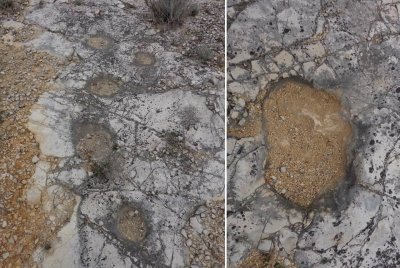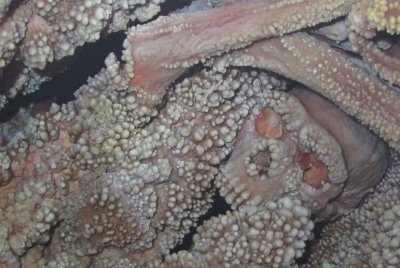Italy
The Murge of Altamura
The Murge of Altamura is an area marked by karstic phenomena, which has given rise to caves, swallow holes and dolines.
In particular, the Pulo di Altamura is the largest doline in the region, measuring about 500m across. Additionally, the De Lucia quarry contains thousands of dinosaur footprints, dating back to about 70 million years ago, and at the Lamalunga cave a complete skeleton of a man from the end of mid-Pleistocene was discovered.
Site Info
Official Information
- Full Name
- The Murge of Altamura (ID: 5009)
- Country
- Italy
- Status
-
On tentative list 2006
Site history
History of The Murge of Altamura
- 2006: Added to Tentative List
- Added to tentative list
- Type
- Mixed
- Criteria
Links
- UNESCO
- whc.unesco.org
All Links
UNESCO.org
- whc.unesco.org — whc.unesco.org
Community Information
- Community Category
- Paleontology: Human evolution
- Paleontology: Non-hominid fossils
- Natural landscape: Karst landscapes and caves
- Archaeological site: Prehistoric
Travel Information
Recent Connections
News
No news.
Recent Visitors
Visitors of The Murge of Altamura
- Alexander Lehmann
- Argo
- Christoph
- Daniel Chazad
- David Berlanda
- Dimitar Krastev
- Erik Jelinek
- Federico P.
- Femke Roos
- Flexiear
- Hadrianus
- Jakob F.
- Jonas Kremer
- Krzysztof B
- Little Lauren Travels
- Małgosia Łupicka
- Mathijs
- MAURO PODDA PANI
- Monica Tasciotti
- Nasebaer
- Paul Schofield
- Piotr Wasil
- Randi Thomsen
- Sergio Arjona
- SirLoydd
- Stanislaw Warwas
- Svein Elias
- Tarquinio_Superbo
- Tim Allen
- Tsunami
Community Reviews
Show full reviews
I read the recent (and so far only) review of this TWHS and noticed our own experience of this place was exactly complementary to what was reported, so I would like to share a few words on that.
In April 2017 on our way from Bari to Matera, we made a stop in Altamura. As it was already reported, three places may be considered for “visiting” this TWHS. First the “pulo” which is a geological formation typical of karstic areas: world heritage list in already full of karstic formations, caves etc (see also the “dolines” in French WHS “Causses et Cevennes”, very similar to “pulo”). Second, Lamalunga cave, where the skeleton of a prehistoric man was found; however Unesco website indicates it cannot be visited. Only the third location was left and this is the one we decided to focus on: a former quarry with dinosaur footprints, named “de Lucia quarry”, better known locally as “cava Pontrelli”.
Coming from Altamura on road SP235, you shall turn left on a very small road just before passing the quarry, cross the railway, then immediately park on the right side of the road. There is a closed gate, but the quarry is partly fenced and it is wide open on the left side of the gate. This is the way we used to get in, as many visitors had already reported on other websites for travellers. The path gently goes down the excavated area and after ca 200 m, you reach the grey …
Keep reading 0 comments
I arrived in Altamura (which seems to mean High Wall) at about 14:30 on a Monday by bus from Gioia del Colle, as I was coming from Taranto, but Altamura can easily be visited from Bari TWHS or Matera WHS by train, as it is located on the rail line between these 2 cities.
First, even though I only became aware of Altamura because of its TWHS status, the walled old town was quite pleasant with a marvelous cathedral, museums, and many cafes / restaurants populated by who appeared to be Italian tourists.
There are 3 museums related to this TWHS in the Altamura area. I believe most museums in Italy are closed on Monday, but the main one of the 3, the Altamura National Archaeological Museum (ANAM), was open on this Monday, so that's where I headed after checking into my hotel.
To state what I found out at the ANAM first, there are basically 3 main sites related to this TWHS. The primal site, so called "Pulo of Altamura," is what is supposed to represent the landscape of the region "Murge" with many sinkholes and is located at 40°53'22.0"N 16°34'05.2"E The Pulo can be visited on your own, but it is just one of the large sinkholes in the region. Then, as the nomination document says, "In addition to these landscape features, the Altamura area includes items of outstanding cultural and archaeological interest as shown by two locations: the De Lucia quarry and the Lamalunga cave. "
The …
Keep reading 0 comments